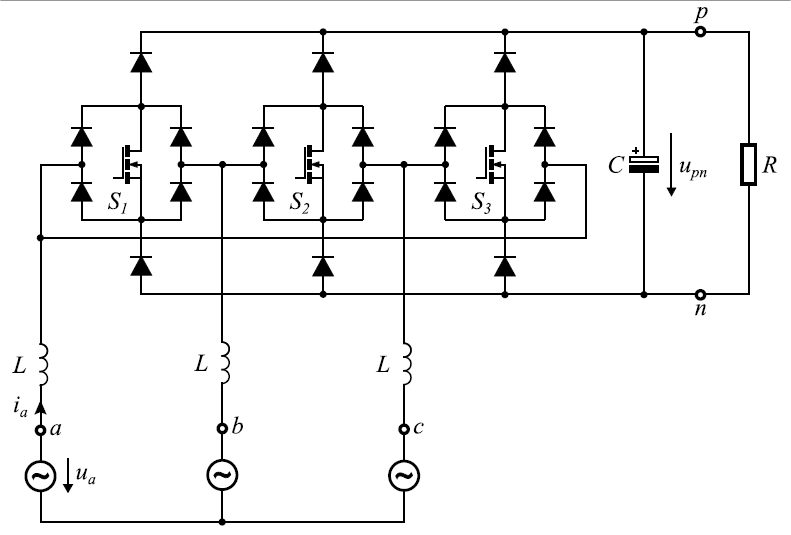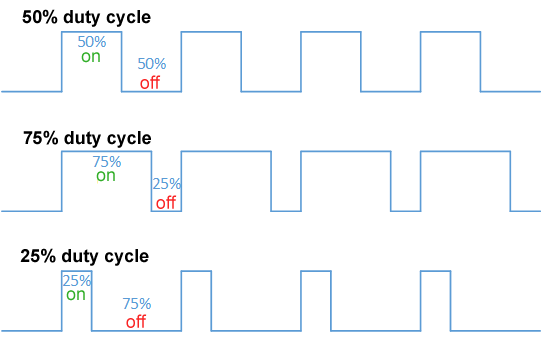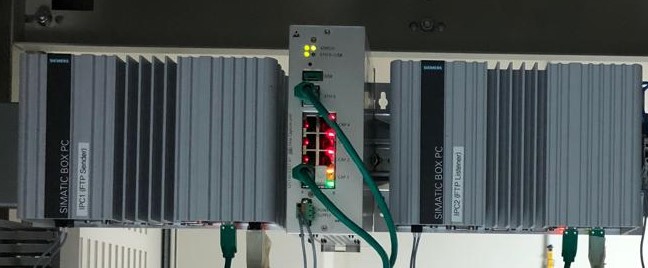|
Warsaw Rectifier
The Warsaw rectifier is a PWM rectifier, pulse-width modulation (PWM) rectifierinvented by in 1992. Features The Warsaw Rectifier provides the following features: * Unity power factor * Three-wire input, which does not require a connection to the neutral wire * Ohmic contact, Ohmic behaviour * Controlled output voltage * Simple control scheme * Low power losses Unique features of the Warsaw Rectifier: * Short circuits do not cause current to flow through switches * No cross-short circuiting of switches possible * Dead time is not required Topology The Warsaw rectifier is a Unidirectional network, unidirectional, three-phase, three-switch two-level Pulse-width modulation, pulse-width modulation (PWM) rectifier. This topology uses three Transistor, insulated-gate field-effect transistors (IGFET) and eighteen diodes. The bidirectional switches (composed of four diodes and one IGFET circuit) are connected in a Circuit topology (electrical)#Y and Δ topologies, delta topology. T ... [...More Info...] [...Related Items...] OR: [Wikipedia] [Google] [Baidu] |
PWM Rectifier
PWM rectifier (Pulse-width modulation rectifier) is an Alternating current, AC to Direct current, DC power Electric power conversion, converter, that is implemented using forced commutated power Electronics, electronic semiconductor switches. Conventional PWM converters are used for wind turbines that have a permanent-magnet alternator. Today, insulated gate Insulated-gate bipolar transistor, bipolar transistors are typical switching devices. In contrast to diode bridge rectifiers, PWM rectifiers achieve bidirectional power flow. In frequency converters this property makes it possible to perform regenerative braking. PWM rectifiers are also used in distributed power generation applications, such as microturbines, fuel cells and windmills. The major advantage of using the pulse width modulation technique is the reduction of higher order harmonics. It also makes it possible to control the magnitude of the output voltage, and improve the power factor by forcing the switches to follo ... [...More Info...] [...Related Items...] OR: [Wikipedia] [Google] [Baidu] |
Pulse-width Modulation
Pulse-width modulation (PWM), also known as pulse-duration modulation (PDM) or pulse-length modulation (PLM), is any method of representing a signal as a rectangular wave with a varying duty cycle (and for some methods also a varying period). PWM is useful for controlling the average power or amplitude delivered by an electrical signal. The average value of voltage (and current) fed to the load is controlled by switching the supply between 0 and 100% at a rate faster than it takes the load to change significantly. The longer the switch is on, the higher the total power supplied to the load. Along with maximum power point tracking (MPPT), it is one of the primary methods of controlling the output of solar panels to that which can be utilized by a battery. PWM is particularly suited for running inertial loads such as motors, which are not as easily affected by this discrete switching. The goal of PWM is to control a load; however, the PWM switching frequency must be sele ... [...More Info...] [...Related Items...] OR: [Wikipedia] [Google] [Baidu] |
Electronic Circuits
An electronic circuit is composed of individual electronic components, such as resistors, transistors, capacitors, inductors and diodes, connected by conductive wires or traces through which electric current can flow. It is a type of electrical circuit. For a circuit to be referred to as ''electronic'', rather than ''electrical'', generally at least one active component must be present. The combination of components and wires allows various simple and complex operations to be performed: signals can be amplified, computations can be performed, and data can be moved from one place to another. Circuits can be constructed of discrete components connected by individual pieces of wire, but today it is much more common to create interconnections by photolithographic techniques on a laminated substrate (a printed circuit board or PCB) and solder the components to these interconnections to create a finished circuit. In an integrated circuit or IC, the components and interconnections ... [...More Info...] [...Related Items...] OR: [Wikipedia] [Google] [Baidu] |
Vienna Rectifier
The Vienna Rectifier is a three-phase AC pulse-width modulation rectifier, invented in 1993 by Johann W. Kolar at TU Wien, a public research university in Vienna, Austria. Features The Vienna Rectifier provides the following features: * Three-phase three-level three-switch PWM rectifier with controlled output voltage * Three-wire input, no connection to neutral * Ohmic mains behaviour * Boost system (continuous input current) * Unidirectional power flowJ. W. Kolar, H. Ertl, F. C. Zach, “Design and Experimental Investigation of a Three-Phase High Power Density High Efficiency Unity Power Factor PWM (Vienna) Rectifier Employing a Novel Integrated Power Semiconductor Module”, Proceedings of the 11th IEEE Applied Power Electronics Conference, San Jose (CA), USA, March 3–7, Vol.2, pp.514-523 (1996) . * High power density * Low conducted common-mode electro-magnetic interference (EMI) emissions * Simple control to stabilize the neutral point potential * Low complexity, low real ... [...More Info...] [...Related Items...] OR: [Wikipedia] [Google] [Baidu] |
Power-factor Correction
In electrical engineering, the power factor of an AC power system is defined as the ratio of the ''real power'' absorbed by the load to the ''apparent power'' flowing in the circuit. Real power is the average of the instantaneous product of voltage and current and represents the capacity of the electricity for performing work. Apparent power is the product of root mean square (RMS) current and voltage. Due to energy stored in the load and returned to the source, or due to a non-linear load that distorts the wave shape of the current drawn from the source, the apparent power may be greater than the real power, so more current flows in the circuit than would be required to transfer real power alone. A power factor magnitude of less than one indicates the voltage and current are not in phase, reducing the average product of the two. A negative power factor occurs when the device (normally the load) generates real power, which then flows back towards the source. In an electric powe ... [...More Info...] [...Related Items...] OR: [Wikipedia] [Google] [Baidu] |
Circuit Topology (electrical)
The circuit topology of an electronic circuit is the form taken by the network of interconnections of the circuit components. Different specific values or ratings of the components are regarded as being the same topology. Topology is not concerned with the physical layout of components in a circuit, nor with their positions on a circuit diagram; similarly to the mathematical concept of topology, it is only concerned with what connections exist between the components. Numerous physical layouts and circuit diagrams may all amount to the same topology. Strictly speaking, replacing a component with one of an entirely different type is still the same topology. In some contexts, however, these can loosely be described as different topologies. For instance, interchanging inductors and capacitors in a low-pass filter results in a high-pass filter. These might be described as high-pass and low-pass topologies even though the network topology is identical. A more correct term for ... [...More Info...] [...Related Items...] OR: [Wikipedia] [Google] [Baidu] |
Diodes
A diode is a two- terminal electronic component that conducts electric current primarily in one direction (asymmetric conductance). It has low (ideally zero) resistance in one direction and high (ideally infinite) resistance in the other. A semiconductor diode, the most commonly used type today, is a crystalline piece of semiconductor material with a p–n junction connected to two electrical terminals. It has an exponential current–voltage characteristic. Semiconductor diodes were the first semiconductor electronic devices. The discovery of asymmetric electrical conduction across the contact between a crystalline mineral and a metal was made by German physicist Ferdinand Braun in 1874. Today, most diodes are made of silicon, but other semiconducting materials such as gallium arsenide and germanium are also used. The obsolete thermionic diode is a vacuum tube with two electrodes, a heated cathode and a plate, in which electrons can flow in only one direction, from ... [...More Info...] [...Related Items...] OR: [Wikipedia] [Google] [Baidu] |
Transistor
A transistor is a semiconductor device used to Electronic amplifier, amplify or electronic switch, switch electrical signals and electric power, power. It is one of the basic building blocks of modern electronics. It is composed of semiconductor material, usually with at least three terminal (electronics), terminals for connection to an electronic circuit. A voltage or Electric current, current applied to one pair of the transistor's terminals controls the current through another pair of terminals. Because the controlled (output) power can be higher than the controlling (input) power, a transistor can amplify a signal. Some transistors are packaged individually, but many more in miniature form are found embedded in integrated circuits. Because transistors are the key active components in practically all modern electronics, many people consider them one of the 20th century's greatest inventions. Physicist Julius Edgar Lilienfeld proposed the concept of a field-effect transisto ... [...More Info...] [...Related Items...] OR: [Wikipedia] [Google] [Baidu] |
Rectifier
A rectifier is an electrical device that converts alternating current (AC), which periodically reverses direction, to direct current (DC), which flows in only one direction. The process is known as ''rectification'', since it "straightens" the direction of current. Physically, rectifiers take a number of forms, including Vacuum tube#Diodes, vacuum tube diodes, wet chemical cells, mercury-arc valves, stacks of copper and selenium rectifier, selenium oxide plates, Diode#Semiconductor diodes, semiconductor diodes, silicon-controlled rectifiers and other silicon-based semiconductor switches. Historically, even synchronous electromechanical switches and motor-generator sets have been used. Early radio receivers, called crystal radios, used a "Crystal detector#Cat whisker detector, cat's whisker" of fine wire pressing on a crystal of galena (lead sulfide) to serve as a point-contact rectifier or "crystal detector". Rectifiers have many uses, but are often found serving as component ... [...More Info...] [...Related Items...] OR: [Wikipedia] [Google] [Baidu] |
Three-phase
Three-phase electric power (abbreviated 3ϕ) is a common type of alternating current (AC) used in electricity generation, Electric power transmission, transmission, and Electric power distribution, distribution. It is a type of polyphase system employing three wires (or four including an optional neutral return wire) and is the most common method used by electrical grids worldwide to transfer power. Three-phase electrical power was developed in the 1880s by several people. In three-phase power, the voltage on each wire is 120 degrees phase shifted relative to each of the other wires. Because it is an AC system, it allows the voltages to be easily stepped up using transformers to high voltage for transmission and back down for distribution, giving high efficiency. A three-wire three-phase circuit is usually more economical than an equivalent two-wire Single-phase electric power, single-phase circuit at the same line-to-ground voltage because it uses less conductor material to tr ... [...More Info...] [...Related Items...] OR: [Wikipedia] [Google] [Baidu] |
Warsaw Rectifier Schematic
Warsaw, officially the Capital City of Warsaw, is the capital and List of cities and towns in Poland, largest city of Poland. The metropolis stands on the Vistula, River Vistula in east-central Poland. Its population is officially estimated at 1.86 million residents within a Warsaw metropolitan area, greater metropolitan area of 3.27 million residents, which makes Warsaw the List of cities in the European Union by population within city limits, 6th most-populous city in the European Union. The city area measures and comprises List of districts and neighbourhoods of Warsaw, 18 districts, while the metropolitan area covers . Warsaw is classified as an Globalization and World Cities Research Network#Alpha 2, alpha global city, a major political, economic and cultural hub, and the country's seat of government. It is also the capital of the Masovian Voivodeship. Warsaw traces its origins to a small fishing town in Masovia. The city rose to prominence in the late 16th cent ... [...More Info...] [...Related Items...] OR: [Wikipedia] [Google] [Baidu] |
Unidirectional Network
A unidirectional network (also referred to as a unidirectional gateway or data diode) is a network appliance or device that allows data to travel in only one direction. Data diodes can be found most commonly in high security environments, such as defense, where they serve as connections between two or more networks of differing security classifications. Given the rise of industrial Internet of things, IoT and digitization, this technology can now be found at the industrial control level for such facilities as nuclear power plants, power generation and safety critical systems like railway networks. After years of development, data diodes have evolved from being only a network appliance or device allowing raw data to travel only in one direction, used in guaranteeing information security or protection of critical digital systems, such as industrial control systems, from inbound cyber attacks, to combinations of hardware and software running in proxy computers in the source and destin ... [...More Info...] [...Related Items...] OR: [Wikipedia] [Google] [Baidu] |






